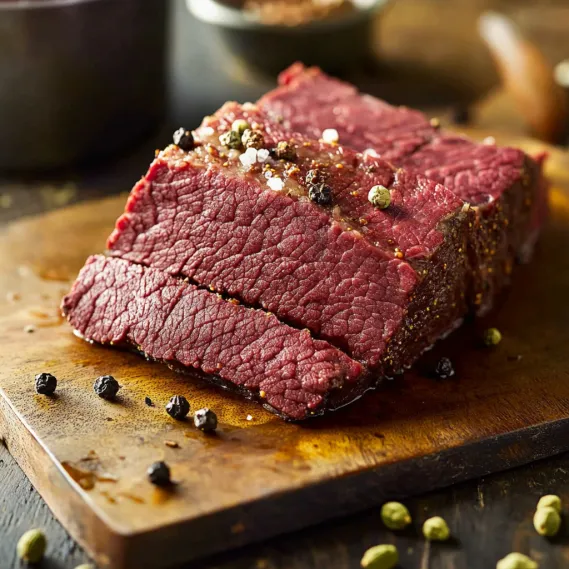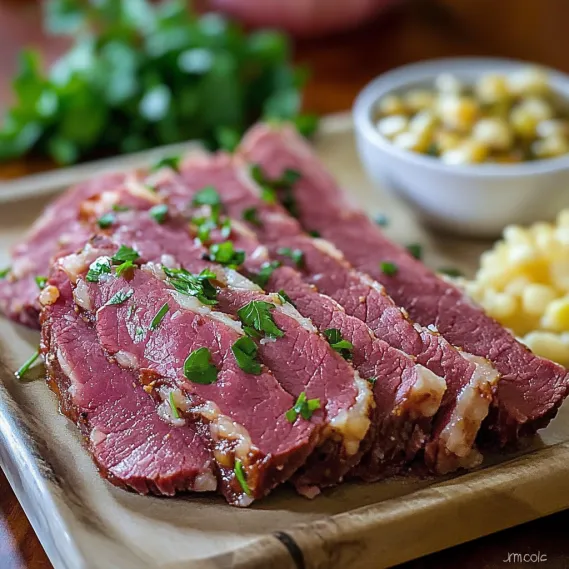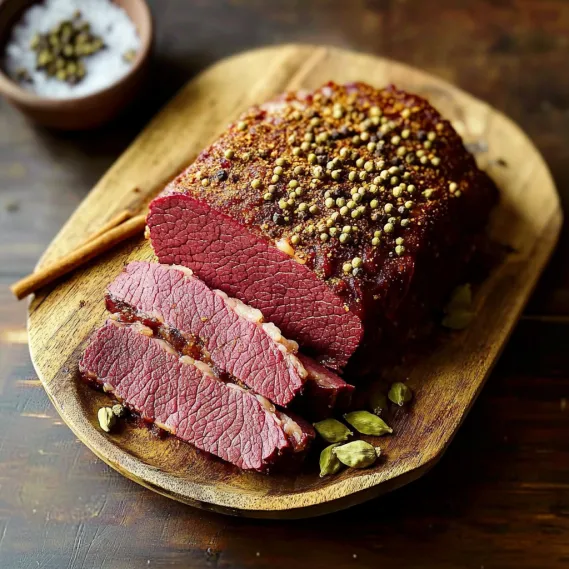 Pin
Pin
Homemade Corned Beef transforms beef brisket into succulent homemade corned beef connecting you to generations of food preservation. The magic happens during brining, as humble meat becomes extraordinary—tender, flavorful, and versatile. The difference from store-bought versions makes the waiting worthwhile.
I first made this recipe when looking for an impressive yet manageable dish for weekend entertaining. After experimenting with various cuts of shrimp and butter combinations, this version became an instant favorite. My husband declared them the best scampi he's ever tasted, and now guests always request them at our gatherings.
Essential Ingredients and Selection Tips
- Beef Brisket: Choose well-marbled meat; flat cut slices uniformly, point cut offers more flavor
- Kosher Salt: Measure by weight as different brands have different densities
- Pink Curing Salt: Gives traditional rosy hue and enhances preservation
- Pickling Spices: Creating your own blend allows customization of flavor
- Brown Sugar: Balances saltiness and helps promote beneficial bacteria
I've found that adding a small amount of chicken powder (bouillon) makes a significant difference in achieving that authentic takeaway flavor. If you don't have it, mushroom powder makes an excellent substitute that adds similar umami depth without changing the overall profile of the dish.
Detailed Cooking Instructions
- Step 1: Create Your Signature Spice Blend
- Toast allspice berries, mustard seeds, coriander seeds, red pepper flakes, peppercorns, cloves, and cinnamon pieces. Crush and mix with bay leaves, ginger, and cinnamon pieces for superior flavor.
- Step 2: Prepare the Brine
- Combine water, kosher salt, pink curing salt, brown sugar, and spice blend. Boil, dissolve ingredients, then cool completely before refrigerating.
- Step 3: Brine the Brisket
- Submerge brisket in chilled brine in non-reactive container. Refrigerate 5-7 days, flipping daily for even curing. Use weight to keep meat submerged throughout process.
- Step 4: Test and Prepare for Cooking
- Rinse brisket thoroughly under cold water. Cut small corner piece to confirm proper curing throughout - pink with curing salt or gray without it.
- Step 5: Cook to Tender Perfection
- Cover brisket with fresh water, add remaining pickling spice. Bring to boil, reduce to simmer for 3 hours until fork-tender. Rest before slicing against grain.

My first attempt at this recipe taught me the importance of proper curing time. Initially, I rushed the process, resulting in a tough, under-cured brisket. Now I ensure the brisket soaks overnight, creating the perfect tender, flavorful texture.
Understanding the Science of Curing
Salt draws moisture from meat via osmosis while penetrating fibers, creating an environment inhospitable to bacteria. Sodium nitrite reacts with myoglobin, producing characteristic color while enhancing flavor and preventing spoilage. This preservation method transforms both texture and taste.

Customizing Your Spice Blend
Add cinnamon for warmth, orange peel for brightness, juniper berries for pine notes, or mace for nutmeg-like depth. Each variation creates signature flavor while maintaining essential character. Spice blend can be made ahead and stored for months.
Serving Beyond St. Patrick's Day
Use in Reuben sandwiches with sauerkraut, dice for breakfast hash with potatoes, or try tacos with pickled cabbage and horseradish cream. The deep, spiced flavors complement surprising variety of dishes.
Troubleshooting Common Issues
For too-salty meat, soak cured brisket in cold water before cooking. Tough meat needs more cooking time to break down collagen. Without pink salt, meat will be gray, affecting appearance but not flavor.

Chef's Helpful Tips
- Cook low and slow, then rest wrapped in foil for tenderness
- Replace some water with stout beer for deeper flavor
- Reduce cooking liquid to use when reheating
- Save liquid for cooking traditional vegetable sides
- Store cooked meat in some cooking liquid to prevent drying
Recipe FAQs
- → Is pink curing salt necessary for homemade corned beef?
- Pink curing salt (sodium nitrite) is optional but traditionally used for two reasons: it gives corned beef its characteristic pink color and helps prevent bacterial growth during the curing process. Without it, your corned beef will taste similar but will be gray-brown in color. If you choose to omit it, ensure you keep the meat refrigerated during the entire curing process.
- → Can I use a different cut of beef besides brisket?
- While brisket is traditional for corned beef because of its fat content and texture, you can use other tough cuts like beef round or chuck roast. These cuts will work with the same brining process, though the final texture may differ slightly. Regardless of the cut, look for one with good marbling for the most flavor and tenderness.
- → What should I do if my corned beef is too salty?
- If your corned beef tastes too salty after brining, you can soak it in cold water for a few hours before cooking, changing the water every hour. Another option is to use more water during the cooking process and/or skip adding salt to any vegetables you might cook with it. Remember that the next time you make the recipe, you can reduce the brining time or salt quantity.
- → Can I add vegetables to cook with the corned beef?
- Absolutely! Traditional additions include cabbage, potatoes, and carrots. Add these vegetables to the pot during the last 30 minutes of cooking the corned beef. The cooking liquid is flavorful and perfect for cooking vegetables. You can also strain the cooking liquid, reduce it slightly, and use it as a sauce for the meat and vegetables.
- → How can I make corned beef more tender?
- For maximum tenderness, cook the corned beef very slowly at a bare simmer. Rapid boiling can toughen the meat. Alternatively, after brining, you can cook the corned beef in a slow cooker on low for 8-10 hours or pressure cook it for about 90 minutes. Regardless of cooking method, always slice the meat against the grain for the most tender bite.
